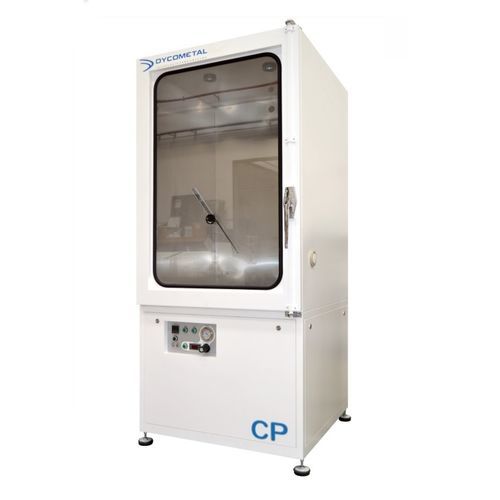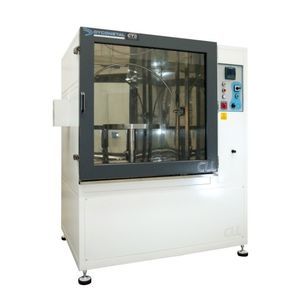
- Metrology - Laboratory
- Metrology and Test Equipment
- Dust test chamber
- DYCOMETAL EQUIPOS DE CONTROL DE CALIDAD, S.L.
- Company
- Products
- Catalogs
- News & Trends
- Exhibitions
Dust test chamber CP seriesfor the aeronautical industryfor electronic circuit boardsfor electrical equipment







Add to favorites
Compare this product
Characteristics
- Test type
- dust
- Application domain
- for the aeronautical industry
- Product applications
- for electronic circuit boards, for electrical equipment, for automobiles, for auto lamp, device, for solar panels
- Configuration
- compact, mobile
- Options and accessories
- with window
- Other characteristics
- stainless steel
- Capacity
Min.: 216 l
(57 gal)Max.: 8,000 l
(2,113 gal)
Description
The dust tightness tests are performed on different components to evaluate the degree of protection to solid agents, evaluating its resistance in values from 1 to 6, being its IP XY nomenclature (X = from 1 to 6). These values will be done depending of the diameter of the used particles during the test. The equipments where these tests are done are named Dust Test Chambers.
The samples that are susceptible to this kind of test use to be: systems of street lighting, traffic lights, lighting and signal elements in automotive, electric and electronic elements of acoustic or lighting safety, electric panels, tight electric boxes, catadioptics, etc.
Features:
• Volumes: From 512 to 8.000 liters
Standard:
– Suction and suspension of dust by means of compressed air or blower fan.
– Suspension of dust by envelope through circulation pump.
– Workspace manufactured in Stainless Steel AISI 304(18/8).
– Glass door with frame with cleaning brush.
– Access-port of 80 mm.
– Interior light.
– Manometer.
– Cycle counter.
Optional:
– Customized solutions
– Height adjustable trays.
– Accessories to do the standards according SAE J575 jointly with EN 60529 in the same chamber.
VIDEO
Catalogs
DUST TEST CHAMBER
4 Pages
Other DYCOMETAL EQUIPOS DE CONTROL DE CALIDAD, S.L. products
Tightness (water, dust,…)
Related Searches
- Test cabinet
- Temperature test cabinet
- Climatic test chamber
- Humidity test cabinet
- Stainless steel test cabinet
- Automobile test cabinet
- Environmental test cabinet
- Test chamber with window
- Test chamber on casters
- Vehicle test chamber
- Durability test chamber
- Battery test chamber
- Test chamber for the aeronautical industry
- Thermostatic test chamber
- Electronic equipment test chamber
- Automatic test chamber
- Compact test chamber
- Electrical equipment test cabinet
- Quality control test chamber
- Electronic circuit board test chamber
*Prices are pre-tax. They exclude delivery charges and customs duties and do not include additional charges for installation or activation options. Prices are indicative only and may vary by country, with changes to the cost of raw materials and exchange rates.



